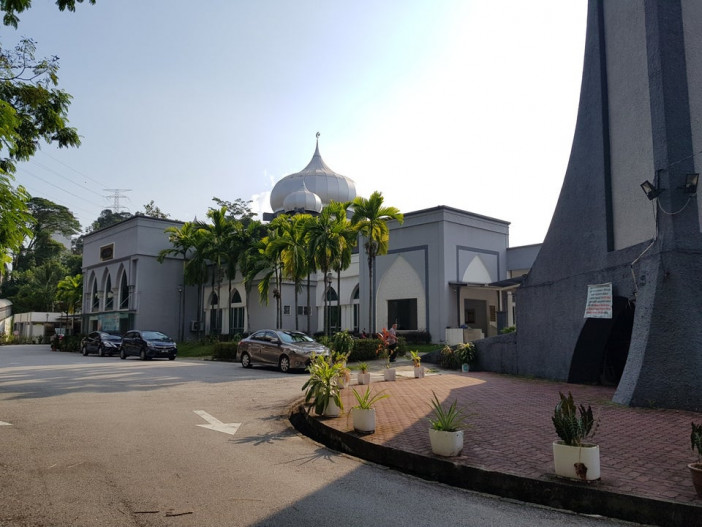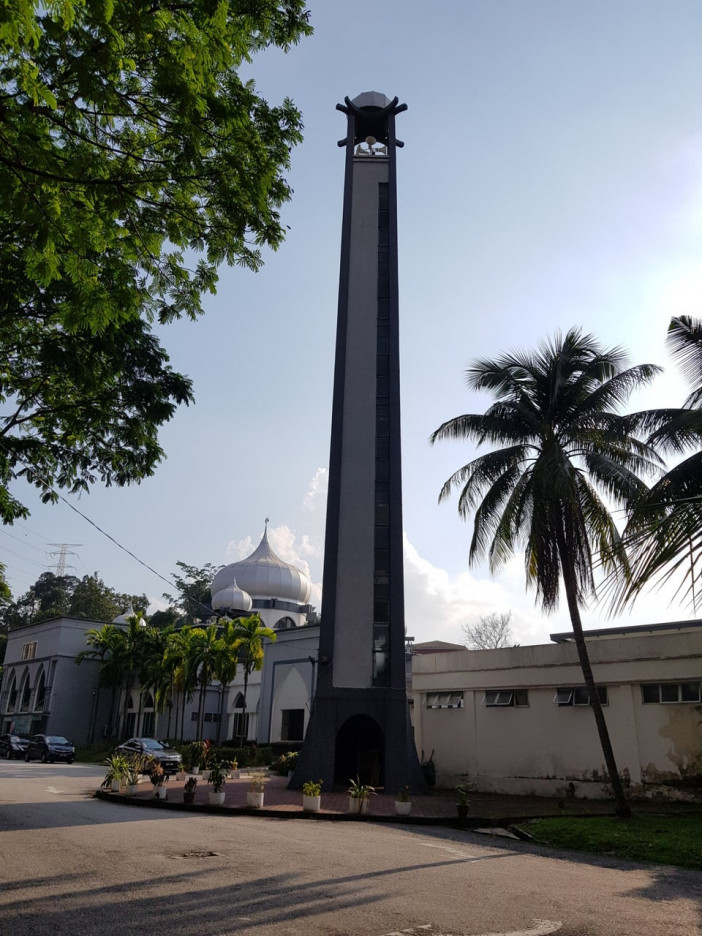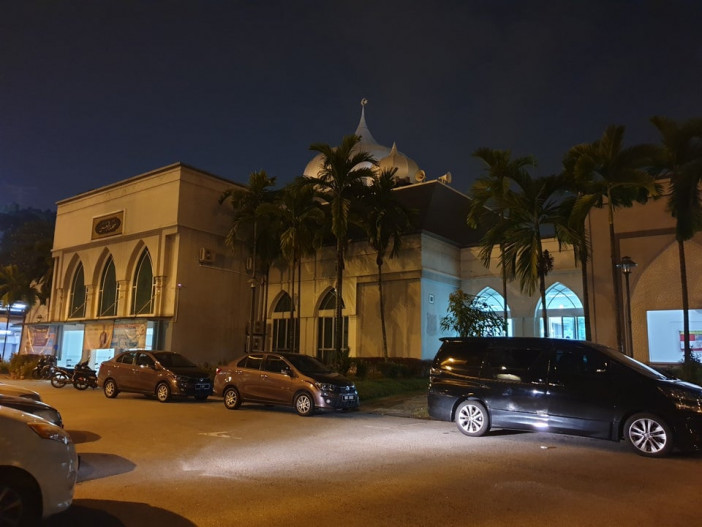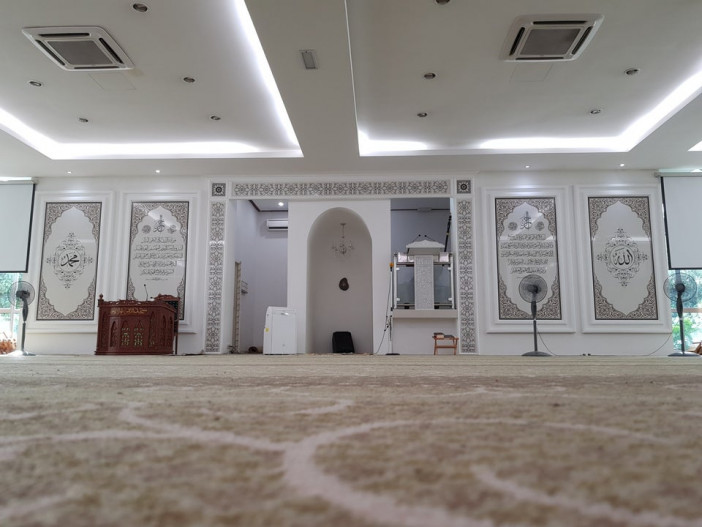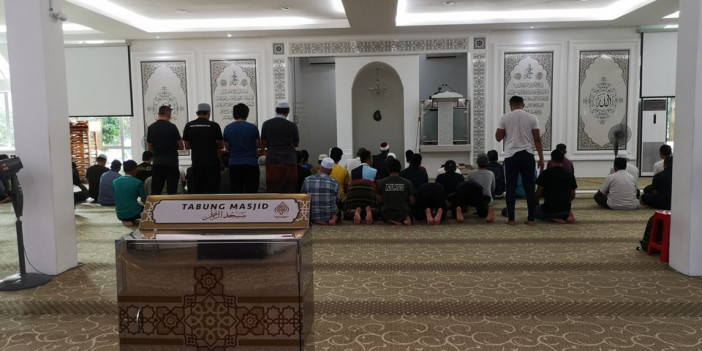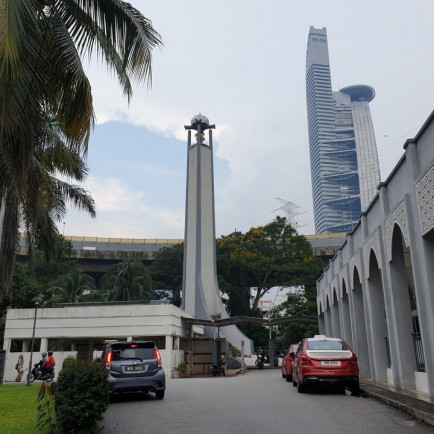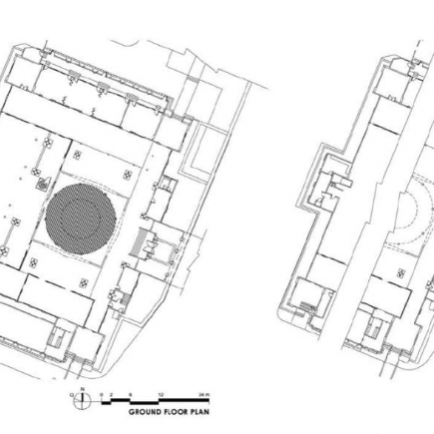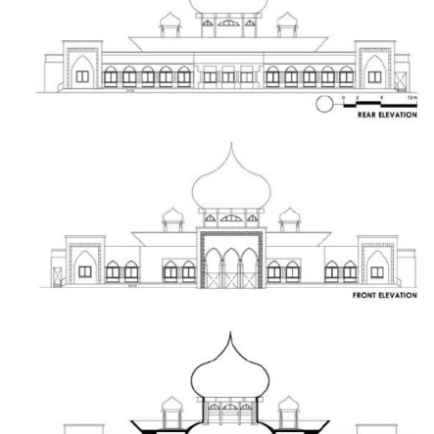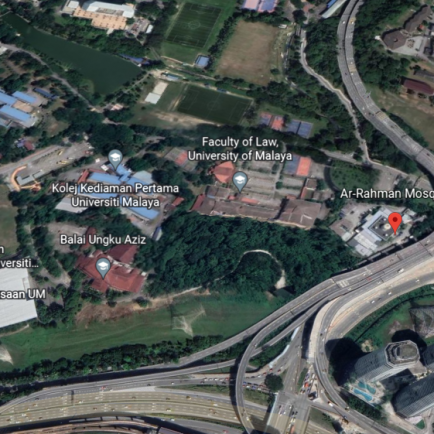Ar-Rahman Mosque
History
In 1962, the Ar-Rahman Mosque was under construction. Tunku Abdul Rahman was honored to lay the foundation stone for the construction of the mosque on November 6, 1962.
On 23 August 1963, the mosque was officially opened by the third Yang di-Pertuan Agong, Almarhum Tuanku Syed Putra Jamalullail of Perlis.
In 1988, the Ar-Rahman Mosque was repaired and upgraded with the cooperation of the Federal Territory Islamic Religious Department (JAWI) which has borne all the costs of the repair and upgrade. As soon as the efforts were completed, JAWI took over the administration of the mosque from the University of Malaya and continues to remain until today.
In 2010, the mosque started hosting a methadone programme combined with praying to treat drug addicts. The methadone is dispensed through pharmacists by the Ministry of Health, while doctors from the University of Malaya supervise the patients. The spiritual side of the treatment is thought to help prevent relapse
Urban and Architectural
Mosque's elements were totally demolished with the exception
of the shape of the domes, minaret and the extended roof eaves. The original built
structure features amodernist expression, through the long, extended and high
flat roof eaves, and wide span pointed arches with elevated onion shaped demes
placed on exposed drum structure, a culmination of the Mughal style and
vernacular architectural influences. It was also an attempt to merge the two
design approaches to co-exist and to represent a modern islamic architectural
expression.
The original detached minaret. with a curved sweeping base,
is an identifiable modernist feature of the mosque that hos been retained,
topped with a small onion-shaped dome. Nonetheless, a former round dome
pavilion structure, akin to the Kuching City Mosque. located on the northeast
entrance way near the ablution areas, was demolished to make way for a larger
prayer area. The original dome which was of a yellow metal color was replaced
by a natural silver finish.
The mosque currently holds a bigger prayer area; the former
mosque sanctuary, identified by the wide space arches. has been retained
However. the former mihrab niche and mimbar space have been dismantled. leaving
a path to the extended prayer hall, where the new mihrab and mimbar are placed.
The new gibla wall features a contemporary look, with an elegant plaster work
incorporating a rounded mihrab niche and the built-in mimbar pulpit.
Description
The Ar-Rahman Mosque was initially known as the University of Malaya Mosque. Not long after that, it was changed to the name as it is now. Ar-Rahman is one of the names of Allah swt which means "The Most Merciful or Compassionate". However, the Ar-Rahman attributed to this mosque is in conjunction with the name of the then Prime Minister of Malaysia, Tunku Abdul Rahman Putra al-Haj who was the founder who played a very big role in its establishment. At that time, residents from about 15 parishes or villages came to the Ar-Rahman Mosque for congregational prayers there.
Details
Location
University of Malaya, Kuala Lumpur, Malaysia
Worshippers
3000
Owners
Tunku Abdul Rahman
Architect Name
Year of Build
1963
Area
2112
Drawings
Map
History
In 1962, the Ar-Rahman Mosque was under construction. Tunku Abdul Rahman was honored to lay the foundation stone for the construction of the mosque on November 6, 1962.
On 23 August 1963, the mosque was officially opened by the third Yang di-Pertuan Agong, Almarhum Tuanku Syed Putra Jamalullail of Perlis.
In 1988, the Ar-Rahman Mosque was repaired and upgraded with the cooperation of the Federal Territory Islamic Religious Department (JAWI) which has borne all the costs of the repair and upgrade. As soon as the efforts were completed, JAWI took over the administration of the mosque from the University of Malaya and continues to remain until today.
In 2010, the mosque started hosting a methadone programme combined with praying to treat drug addicts. The methadone is dispensed through pharmacists by the Ministry of Health, while doctors from the University of Malaya supervise the patients. The spiritual side of the treatment is thought to help prevent relapse
Urban and Architectural
Mosque's elements were totally demolished with the exception
of the shape of the domes, minaret and the extended roof eaves. The original built
structure features amodernist expression, through the long, extended and high
flat roof eaves, and wide span pointed arches with elevated onion shaped demes
placed on exposed drum structure, a culmination of the Mughal style and
vernacular architectural influences. It was also an attempt to merge the two
design approaches to co-exist and to represent a modern islamic architectural
expression.
The original detached minaret. with a curved sweeping base,
is an identifiable modernist feature of the mosque that hos been retained,
topped with a small onion-shaped dome. Nonetheless, a former round dome
pavilion structure, akin to the Kuching City Mosque. located on the northeast
entrance way near the ablution areas, was demolished to make way for a larger
prayer area. The original dome which was of a yellow metal color was replaced
by a natural silver finish.
The mosque currently holds a bigger prayer area; the former
mosque sanctuary, identified by the wide space arches. has been retained
However. the former mihrab niche and mimbar space have been dismantled. leaving
a path to the extended prayer hall, where the new mihrab and mimbar are placed.
The new gibla wall features a contemporary look, with an elegant plaster work
incorporating a rounded mihrab niche and the built-in mimbar pulpit.
Description
The Ar-Rahman Mosque was initially known as the University of Malaya Mosque. Not long after that, it was changed to the name as it is now. Ar-Rahman is one of the names of Allah swt which means "The Most Merciful or Compassionate". However, the Ar-Rahman attributed to this mosque is in conjunction with the name of the then Prime Minister of Malaysia, Tunku Abdul Rahman Putra al-Haj who was the founder who played a very big role in its establishment. At that time, residents from about 15 parishes or villages came to the Ar-Rahman Mosque for congregational prayers there.


